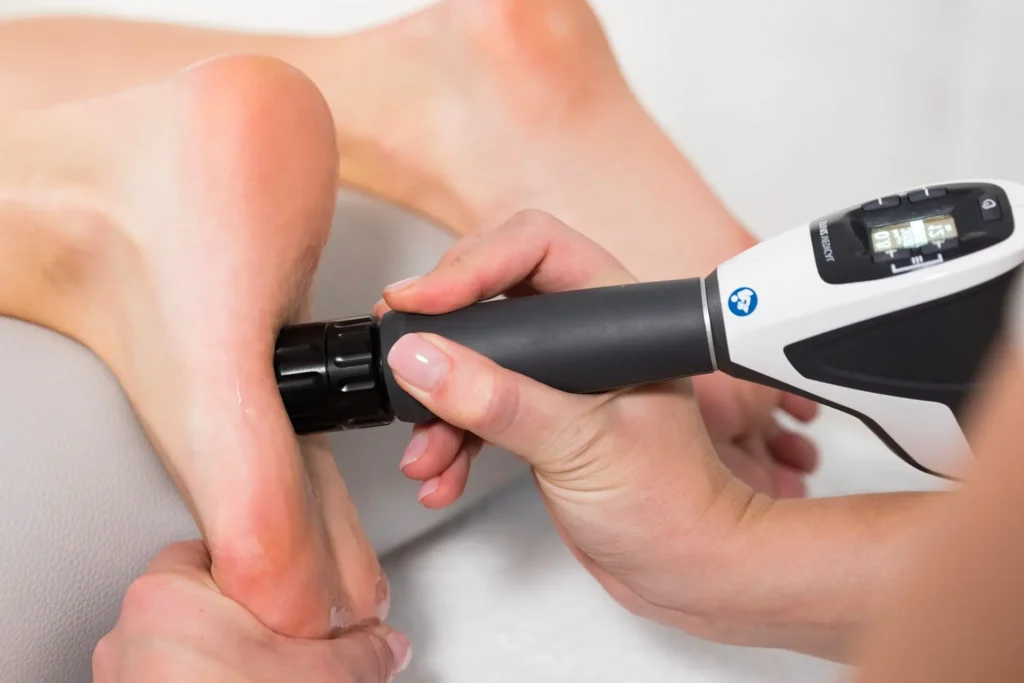Plantar fasciitis is a common condition that causes pain in the heel and bottom of the foot. This condition arises when the plantar fascia, a thick band of tissue that connects the heel bone to the toes, becomes inflamed or irritated. Athletes and individuals on their feet for extended periods often experience this condition. Here is more information on how a foot doctor typically addresses plantar fasciitis through various treatment options:
Diagnosis and Initial Assessment
The treatment of plantar fasciitis begins with a thorough diagnosis. A foot doctor examines the patient’s medical history and asks detailed questions about their symptoms. This includes understanding the duration and intensity of the pain, any activities that worsen or alleviate it, and the patient’s daily routine.
A physical examination often follows, during which the foot doctor checks for tenderness, swelling, and specific areas of discomfort. The doctor may also assess the flexibility of the foot, ankle, and surrounding tissue. Imaging tests such as X-rays or ultrasounds might be recommended to confirm the diagnosis and rule out other conditions like stress fractures or arthritis.
Conservative Treatment Options
Foot doctors often start with conservative treatments to manage plantar fasciitis. Rest is one of the key approaches, as limiting activities that worsen the condition allows the plantar fascia to heal. Doctors often recommend applying ice packs to reduce inflammation and swelling after physical activity or prolonged standing.
Stretching exercises play a significant role in alleviating symptoms. A foot doctor typically recommends stretches that target the plantar fascia, Achilles tendon, and calf muscles. These exercises improve flexibility and reduce tension in the affected area. Orthotic devices, such as custom-made shoe inserts or heel pads, offer additional support and cushioning to redistribute pressure on the foot and reduce strain on the plantar fascia.
Advanced Interventions for Chronic Cases
When conservative methods do not provide relief, a foot doctor may recommend advanced interventions. Physical therapy is often introduced at this stage. Therapists use techniques such as massage, strengthening exercises, and ultrasound therapy to alleviate pain and improve foot function.
Foot doctors might also use corticosteroid injections in specific cases. These injections target inflammation and provide significant, albeit temporary, pain relief. While effective, these are typically used sparingly to avoid potential side effects. Extracorporeal shock wave therapy (ESWT) is another intervention for persistent cases. This non-invasive treatment involves delivering sound waves to the affected area to stimulate tissue healing and reduce pain.
Surgical Treatments as a Last Resort
Surgery is only an option for patients who do not respond to conservative and advanced treatments over an extended period. The most common surgical option is plantar fascia release, where the surgeon removes tension from the plantar fascia by cutting a portion of it. This helps relieve pain and allows the patient to regain normal foot function. Rehabilitation and physical therapy are typically required post-surgery to enable a successful recovery.
Get Treatment for Plantar Fasciitis
Foot doctors treat plantar fasciitis through a range of approaches, starting with diagnosis and conservative methods such as rest, stretching exercises, orthotics, and proper footwear. For more severe cases, advanced interventions like physical therapy, corticosteroid injections, or shock wave therapy might be employed.
Surgical options are available for chronic cases resistant to other treatments. These strategies aim to relieve pain, restore mobility, and improve the overall quality of life for individuals with plantar fasciitis. Consultation with a foot doctor remains the most effective way to address this condition.
Read More: Cheslin Kolbe Net Worth: Earnings, Contracts & Career







